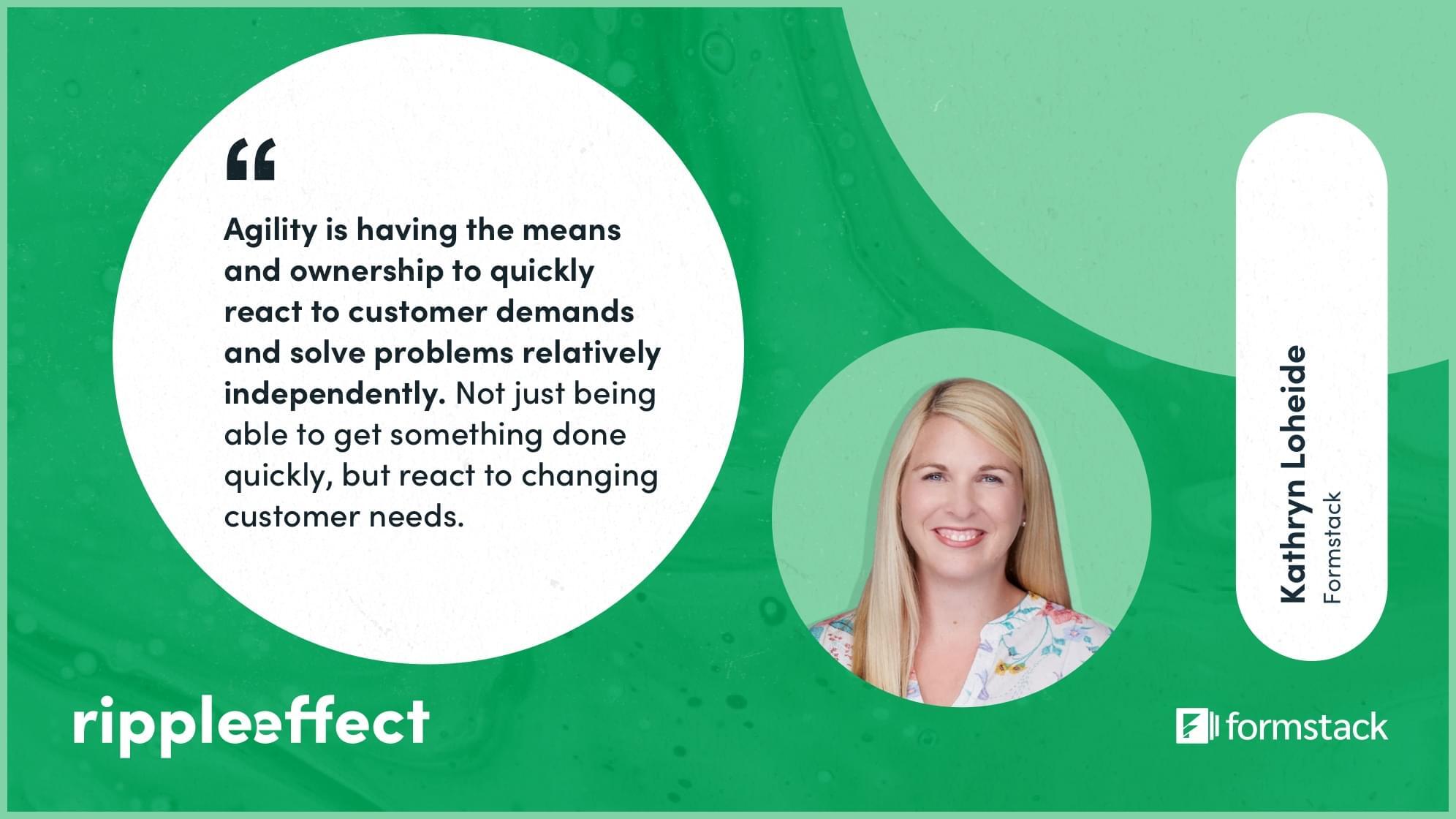Remember when your company was mapping out one-year, two-year, or even three-year phases for digital transformation?
In retrospect, the days of months-long planning seem like a luxury now. Digital strategies that once spanned entire quarters are now being scaled down to days or weeks.
Healthcare providers are creating parking lot waiting rooms and digital front doors.
College campuses are replacing in-person visits with virtual tours.
Retailers are accelerating e-commerce strategies, real estate agencies are digitizing processes, and banks are moving physical channels online.
There’s not a single industry that hasn’t been impacted by the move toward digital engagement.
It’s overwhelming, to say the least. Going through a digital transformation was already costly and time-consuming in the slow-and-steady days. Add in a global pandemic that’s accelerating transition plans for 77% of CEOs, and the process has become downright taxing.
Which means that now more than ever, digital agility is key.

When your organization is digitally agile, teams can make incremental changes and respond to emerging trends quickly—without having to invest a lot of time or money.
However, you have to get it right.
While digital agility offers tremendous benefits, it only works when you have all the right processes in place. Here at Formstack, we've seen a lot of otherwise strong digital transformation strategies derailed by one oversight. Below are three of the most common pitfalls we've seen, along with digital technology tips you can use to help keep your teams agile.
Pitfall 1: Holding on to overly complex software
Setting the stage for digital agility starts with your technology. But too often, companies invest in robust software packed with lots of features and functionalities—only to discover later that many of those extras are rarely, if ever, used.
Usually, what employees actually need is a handful of tools that are flexible, intuitive, and easy to use—and that allow teams to quickly spin up new workflows any time the need arises.
As one experienced marketer describes it:

In other words…
If you can’t use a tool every day, it probably doesn’t belong in your tech stack.
Our advice? Conduct a quick audit of your current digital technology. If you discover overly-complicated tools that don't get much use, consider replacing them or getting rid of them altogether. This is precisely how companies like Yeti are saving as much as 100 staff hours a month.
Pitfall 2: Adopting new tools too quickly
A new tool here, another subscription there...
The sheer volume of SaaS apps available today has made it remarkably easy to adopt new software for virtually any task.
However, there is a downside.
The average enterprise now uses 288 different SaaS apps, with thousands of individual subscriptions across teams. But many of those accounts are duplicates, and most software is adopted with very little forethought or planning.
As a result, organizations tend to churn through more than 30% of their apps each year and waste money on subscriptions that rarely get used.
This mistake is a very common one to make, and it can slow down innovation—big time.
In reality, your teams probably don’t need dozens of different apps. Or even half a dozen, for that matter. Surveys show that 70% of employees want apps that make it easy to find information and get work done.
That's why it’s so important to do your research first, before investing in new software. The key is to look for digital technology that’s flexible enough to work across teams, with easy-to-learn features designed to support collaboration, creativity, and, ultimately, digital agility.

Pro Tip: Conducting research doesn't need to be time-consuming. Resources such as TrustRadius, Capterra, and G2 can give you insight into what real users have to say about ease of use, ease of setup, support, and other factors.
Pitfall 3: Creating data silos
At a time when needs and trends change daily, coordinating efforts across your entire organization is critical.
That means data silos must go.
We’ve covered the danger of data silos at length, but the main thing to know is this:
As long as different departments are using different tools, important decisions will be made slowly and ineffectively, and may not be very accurate.
After all, if each team is using its own source of information, you can’t possibly ensure your customer is having the same seamless experience across each touchpoint.
To prevent this from happening, look for digital technology that simplifies cross-department collaboration. This one simple change can have a big impact on digital agility. And it’s not nearly as difficult as you might think to find tools that are flexible enough to fit everyone’s needs.
At Formstack, for example, we’ve been working on a lot of updates and enhancements in recent months to ensure users can collect critical data and automate workflows across entire organizations, all with one central platform.
For example:
- Healthcare providers use Formstack to streamline patient registration and simplify patient onboarding
- Universities and colleges use it to speed up everything from financial aid to fundraising, and to make virtual tours more engaging
- Insurance companies use it to retain customers and quickly gain a competitive edge
From nonprofit organizations to financial services institutions, companies across industries are discovering new ways to tear down data silos and embrace digital agility across dozens or even hundreds of different employees.
Get ready for the next phase of digital transformation
Bottom line: Identifying the right digital technology tools today will ensure you can quickly adapt and maintain a competitive edge for years to come—no matter what business disruptions the future holds.
If you’re looking for tools to keep your organization digitally agile, watch our Buyer's Guide for Agile Workplace Software webinar now! Get an unbiased look at popular workflow automation tools that can help you reach your goals.











